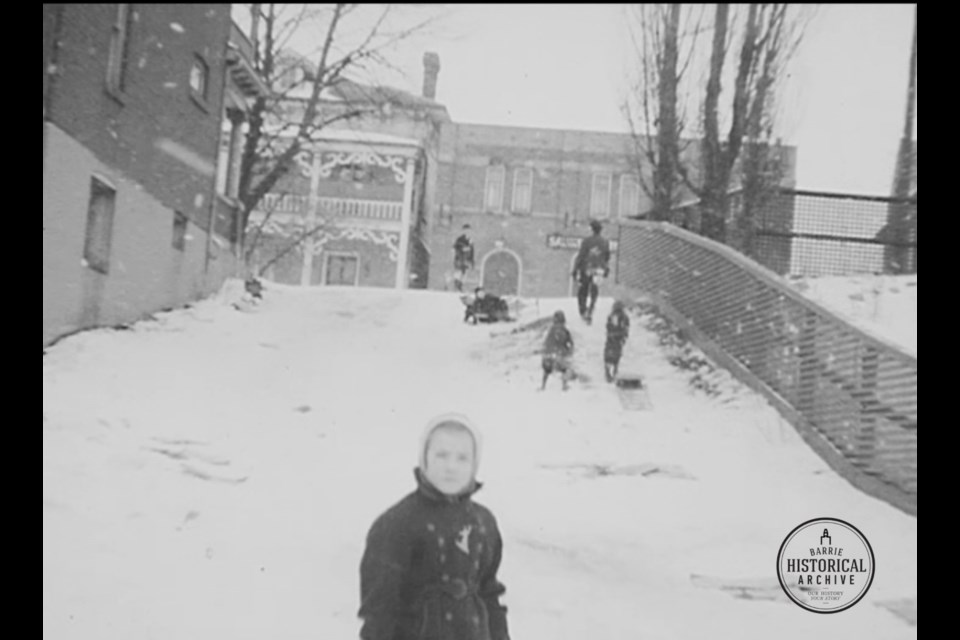This ongoing series from Barrie Historical Archive curator Deb Exel shows old photos from the collection and one from the present day, as well as the story behind them.
Sledding on Collier Street
Sledding is one of those opportunistic activities.
In most neighbourhoods there was a house, once the snow came, that had a decent tobogganing hill on their property. Everyone knew these places and strangely, the home owners never seemed to mind youngsters trudging around their yards.
Nomadic sledders, turned out of the house for the day, sought winter adventures, always questing for new and exciting hills to ride.
In the historic neighbourhood The Grove, two popular go-to spots were behind Newton’s Farm (watch out for that creek at the bottom) and the Rockforest II estate on Owen Street.
Bigger thrills could be found at the Barrie Country Club on Sunnidale Road (with a water hazard waiting at the bottom of the hill) and nearby Hillcrest School on Toronto Street.
Regardless, you could count on kids to suss out the optimum snow-covered inclines for exploiting gravity.
Like this downtown sledding spot – it doesn’t get more urban (or bold!) than tobogganing down a laneway off one of the busiest streets in town.
Whether this laneway was closed or just hadn’t been plowed, the kids were taking full advantage of the conditions, converting the alley to the perfect sledding hill!
If you need help with your bearings, this is looking up towards Collier Street, the lot on the right of the fence is now the building at 55 Collier, and the house on the left side of the image (part of the foundation still remains) might be remembered by some as Chau’s Chinese Food.
Bonus! In the background of this charming slice of nostalgia, is a rare view of the Weir House at 58 Collier while it still had its roof dormers, chimneys and large, decorative brackets. Next to the historic house, which still stands, is the original Salvation Army Citadel , demolished in 1961.



